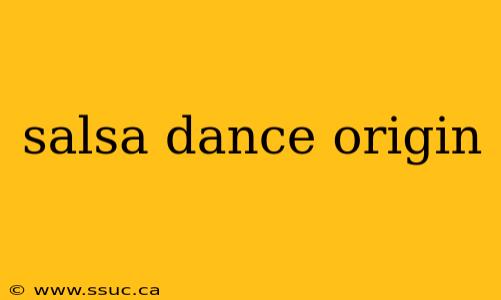Salsa: A Dance Story From Cuba to the World
Salsa, a vibrant and energetic dance, has captivated audiences worldwide with its infectious rhythms and passionate movements. But where did this captivating dance originate? The answer, like salsa itself, is complex and multifaceted, weaving a story of cultural exchange and evolution across the Americas.
A Fusion of Rhythms:
The roots of salsa can be traced back to the diverse musical traditions of Cuba, particularly the Afro-Cuban music genres of son and mambo. "Son is the ultimate foundation of salsa," states a paper by Dr. Luis A. Aponte on Academia.edu, highlighting its key influence. Son, with its rhythmic clave pattern and improvisational nature, paved the way for mambo, which emerged in the 1940s and became immensely popular in the United States.
While son and mambo provided the musical foundation, salsa incorporated elements from other dance forms like rumba and cha-cha-cha. This fusion of rhythms and dance styles gave birth to a new, dynamic dance experience.
From the Streets to the Stage:
Salsa didn't just happen in a studio; it blossomed organically in the streets of New York City during the 1960s and 70s. As Cuban and Puerto Rican communities flourished, their music and dance traditions intertwined, giving rise to salsa clubs and dance halls. "The development of salsa in New York was a result of the interaction of different Latin American communities," explains a study by Dr. Elizabeth Ramsey on Academia.edu. This interaction fostered a unique style that blended influences from various countries, resulting in the salsa we know today.
Styles and Variations:
Salsa, as a dance, has evolved into diverse styles, each with its own character and nuances. Cuban salsa, with its strong rhythmic foundation and intricate footwork, emphasizes partner work and close connection. New York salsa boasts a more linear and open style, focusing on dynamic turns and intricate footwork. Los Angeles salsa features a blend of Cuban and New York styles, known for its smooth movements and strong musicality.
Beyond the Dance Floor:
Salsa's influence extends beyond the dance floor. Its vibrant energy has inspired numerous films, television shows, and books. Salsa music is an integral part of Latin American culture, celebrated in countless festivals and events worldwide.
The Evolution Continues:
Salsa continues to evolve, incorporating new elements and styles as generations of dancers contribute their own interpretations. From the bustling streets of New York to the vibrant dance studios of Miami and beyond, salsa remains a testament to the power of cultural exchange and the beauty of human expression.
Tips for Salsa Beginners:
- Find a good teacher: Learning from an experienced instructor ensures you learn the fundamentals and develop proper technique.
- Practice regularly: Like any dance, salsa requires dedication and practice to master the steps and feel the rhythm.
- Embrace the music: Listen to salsa music and feel the beat! This will help you understand the rhythm and flow of the dance.
- Have fun: Salsa is a social dance, so relax, enjoy the music, and connect with your partner!
In conclusion, salsa is more than just a dance; it's a cultural phenomenon that has captivated the world with its infectious energy and vibrant spirit. As we continue to explore and celebrate this dance, we also acknowledge its rich history and the diverse communities that have shaped its evolution.
